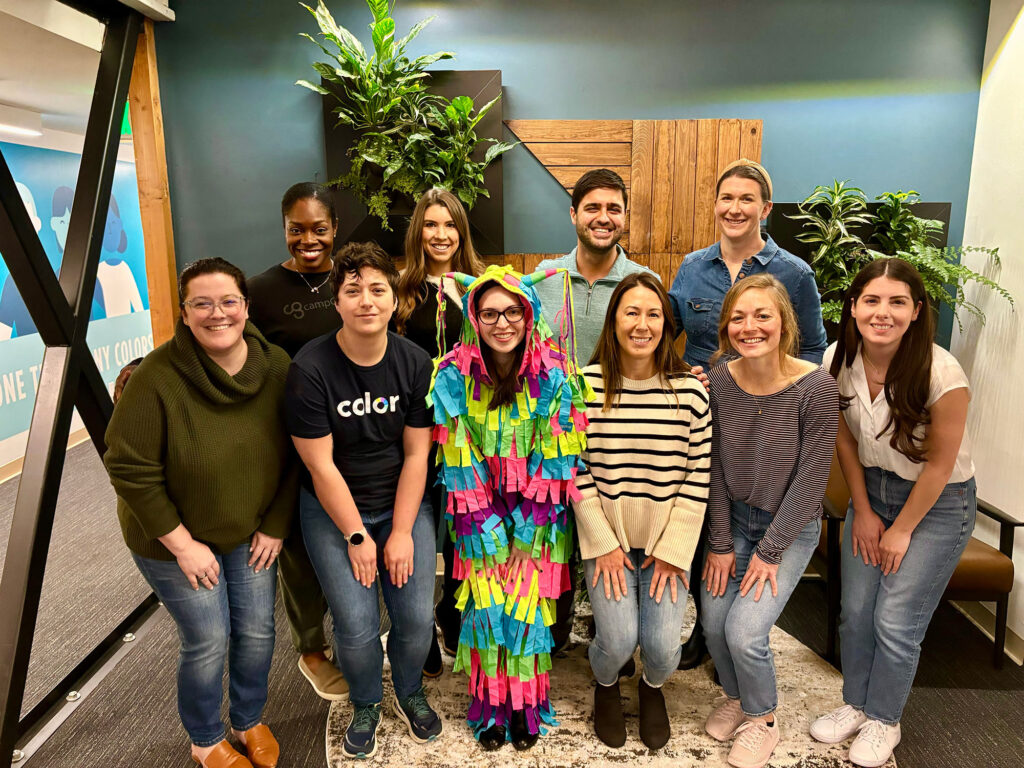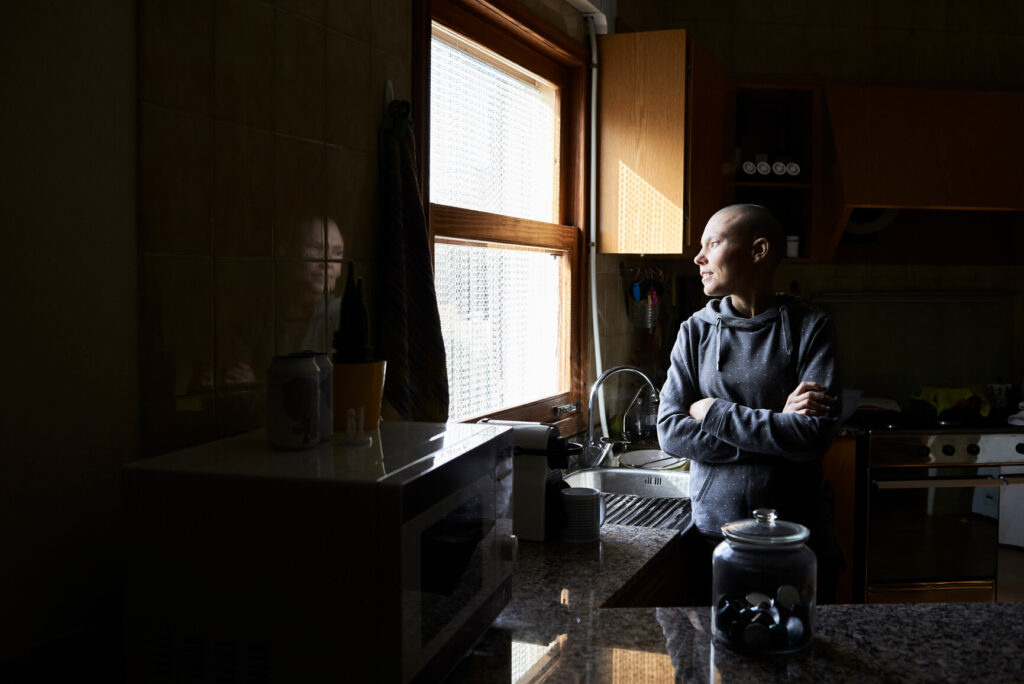News & Articles
BRCA1, BRCA2 and Other Cancer Risk Genes: Five Facts About Why They Also Matter for Men
Color Genomics
Throughout the month of October, genetic counselors at Color held educational sessions about genetic testing for hereditary breast and ovarian cancer risk. Men in the audience commonly asked, “How is this genetic test relevant to me?” Many men thought that the genes that impact breast and ovarian cancer risk — BRCA1, BRCA2 and other genes — aren’t relevant for men. This is a common misperception.
Here are five little-known facts about why genes that impact risk of breast and ovarian cancer matter for men:
- Mutations in BRCA1, BRCA2 and other genes are equally likely in men.
Everyone has copies of genes associated with breast and ovarian cancer risk, such as the BRCA1 and BRCA2 genes. Having a mutation in one of these genes is what can predispose a person to breast, ovarian and other types of cancer. It is possible for both women and men to inherit a mutation in one of these genes from one of their parents. In fact, men are as likely as women to have one of these mutations. Information about mutations in BRCA1, BRCA2 and other genes can be valuable both from a personal as well as a family health standpoint, as discussed below. - Contrary to common perception, men can also get breast cancer and as with women, certain genetic mutations significantly increase the risk of breast cancer in men.
Many people don’t know that men can get breast cancer. While a man has a low chance of developing breast cancer in his lifetime (1 in 1,000 chance), genetic mutations may increase the risk of male breast cancer.[1] For example, a man with a BRCA2 gene mutation can have up to a 12% chance of developing breast cancer by age 70.[2] - Mutations in BRCA1, BRCA2 and other genes that increase risk of male breast cancer can also increase the risk of other cancers in men.
In addition to increasing a man’s risk for breast cancer, mutations in BRCA1, BRCA2 and other genes associated with breast and ovarian cancer risk can increase a man’s risk for other cancers. For example, mutations in BRCA1 increase a man’s risk for prostate and pancreatic cancer. Mutations in the BRCA2 gene increase a man’s risk for prostate and pancreatic cancer as well as melanoma. Specifically, a man with a BRCA2 gene mutation can have up to a 16% risk of developing prostate cancer by age 70.[3, 4] - If a man has a mutation, each of his direct family members (parents, siblings and children) has a 50% chance of having the same mutation.
Mutations in genes related to breast and ovarian cancer risk (BRCA1, BRCA2 and others) can be inherited from fathers as well as mothers. If a man has a mutation, it likely means that one of his parents also has that mutation. Moreover, each of his siblings and children (both sons and daughters) has a 50% chance of inheriting the same mutation. For his female relatives, having a mutation can imply a significant increase in the risk of developing breast, ovarian and other cancers. For example, a woman with a BRCA1 gene mutation can have up to an 81% risk of developing breast cancer by age 80.[5] - A family history of breast and ovarian cancer can be an indicator of a gene mutation in the family.
Family history can be an indicator of a potential gene mutation, though many people who have mutations do not have a significant family history of breast or ovarian cancer.[5, 6, 7] In addition to a personal history of male breast cancer, men who have a family history of breast or ovarian cancer have a higher likelihood of having a BRCA1, BRCA2 or other gene mutation. It is therefore important to know one’s family history of cancer. Seeing family over the holidays can be a good opportunity to speak with relatives about their history of cancer and other diseases.
Alan Blassberg, a BRCA2 gene mutation carrier, shares his story
Alan’s grandmother on his mother’s side passed away from breast cancer. His mother’s sister passed away from ovarian cancer. Both of his father’s parents passed away from colon cancer. His sister, Sammy, was diagnosed with breast cancer and passed away at the age of 49. Before her passing, she was tested for genetic mutations that could help explain her personal and family history of cancer. She was found to have a BRCA2 gene mutation. Alan’s other sister, Lisa, did not have cancer but had genetic testing and was found to have the same BRCA2 gene mutation. Lisa’s doctor told her that the men in the family, in addition to the women, should consider testing. If they had the mutation that ran in the family, they would be at increased risk of male breast cancer, prostate cancer, pancreatic cancer and melanoma. Additionally, they could pass the mutation onto their children. No one had previously shared this information about male cancer risk and inheritance with Alan and his family.
Deciding whether to get tested was difficult for Alan. On one hand, he did not want to face the reality that he may be at increased risk of developing cancer; however, he felt that it would be empowering to have this knowledge. Ultimately, he decided that ignoring the potential risk was not the right choice for him.
About a year after his sister Sammy’s death, Alan learned that he also has the BRCA2 gene mutation that runs in his family. His girlfriend, who is a two-time cancer survivor, took him to meet her doctor so he could ask questions and learn more about BRCA2. Everything in the office was pink. The questionnaire he filled out was for a woman, with questions about when he had his first period. The doctor validated the fact that many people don’t consider their father’s family history, despite the fact that half of all BRCA1 and BRCA2 gene mutations are equally likely to come from the father’s side of the family. Neither of Alan’s parents have undergone testing, so at this time, it is uncertain which side of the family the mutation comes from.
Alan now does regular screening for male breast cancer and other cancers associated with mutations in the BRCA2 gene. He feels grateful to know this information and hopes that more of his relatives will learn their genetic status. Alan explains, “I felt very empowered by learning this information and I want others to have the same option.” As a director and producer, he created a film about hereditary breast cancer and how it affects men, women and their loved ones. You can watch the Pink and Blue trailer here and look for a movie screening near you.
As Alan’s story highlights, family history and genetic testing are relevant and informative for men as well as women. Both are equally likely to have a mutation that increases risk for breast, ovarian and other types of cancer. When a man learns that he has a mutation that increases his risk for cancer, this information can help him as well as relatives who may want to learn if they have the same mutation. With genetic testing becoming more affordable and accessible, it is now possible for more individuals to learn empowering genetic information and work with their healthcare providers on a personalized plan based on this information.
Resources to learn more:



